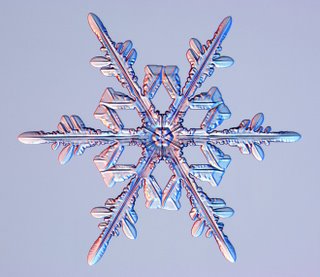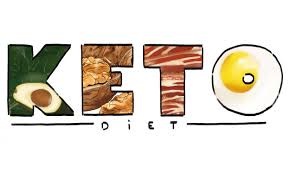Artic Blast
You wouldn't know it by the temperature this morning but, in 12 hours time, we will have our first real cold weather of the year. I've heard a lot of talk about the weather and what it will do over the evening and tomorrow during the day. The cold front is going to start blowing in later this afternoon just in time for the drive home from work; however, the rain won't start until early tomorrow morning. The weather report is showing rain and mixed precipitation during the afternoon hours tomorrow. With past few days of warmth, we should not experience many problems on the road as a result unless people go crazy and forget how to drive or if they take the advice of some of the answers to yesterday's quiz.
If you were hoping for a snow day, you may have to wait till the next round. Nevertheless, this is Texas and the weather can change at any moment. Just make sure to grab a jacket if you're heading out tonight. If you're staying inside for the evening, pull down an extra blanket for the next few days.
The Yogurt Flavors: Chocolate Decadence, World Class Vanilla, Mocha, Cappuccino, Roasted Almond and Strawberry Shortcake.
Today is free small yogurt day for all UT Dallas students. Come in and show us your student ID for a free small throughout the day. (Limit one per person.)
Wonderful Photo Wednesday:



All photos are from www.SnowCrystals.com. There are several galleries with additional photos and there is a lot of great information available on this site.
1. Snowflakes look white because you see light scattered from all the edges, much like the white you see on a surface of scratched or etched glass. They’re actually transparent.
2. Snowflakes are made of ordinary ice, but they are neither frozen raindrops nor do they come from liquid water. Snowflakes form when ice condenses directly from water vapor in air.
3. Snowflake shapes change dramatically with temperature. Thin, plate-like crystals grow when the weather is just below freezing; slender columns and needles form when it is a few degrees colder. Especially large flakes appear when the temperature is around -15 degrees C (5 degrees F).
4. A snow crystal refers to a single crystal of ice. The term ‘snowflake’ can refer to a single snow crystal or a mass of many snow crystals that float to earth.
5. A snowflake has six arms and while the arms grow simultaneously, not all snowflakes are symmetrical.
6. Snowflakes are frequently decorated with small ice particles called rime, colored droplets that collided with the crystals during flight and froze on their surfaces.
7. Thirty five different types of snow crystals have been identified, including bullet rosettes, radiating dendrites, 12-branched stars and arrowhead twins.
8. Because they are so small, it is best to view a snowflake with some optical gear. A basic magnifying lens, available at drug stores or a jeweler’s loupe are recommended.
9. It is generally believed that no two snowflakes are exactly alike. As it blows around inside a cloud, a developing crystal experiences ever-changing temperatures and humidity levels. Each change in its local environment causes a change in the way the crystal grows. After numerous twists and tumbles, the final structure can be quite complex. Because no two snowflakes follow the exactly same path, it can be concluded that no two snowflakes are exactly alike.
10. Snow crystals often show many flat, crystalline surfaces, or facets. Bright reflections off these mirror-like facets give freshly fallen snow its sparkle.
Credit: “Ken Libbrecht’s Field Guide to Snowflakes.”
(Can you tell that I am excited about the weather change?)
If you were hoping for a snow day, you may have to wait till the next round. Nevertheless, this is Texas and the weather can change at any moment. Just make sure to grab a jacket if you're heading out tonight. If you're staying inside for the evening, pull down an extra blanket for the next few days.
The Yogurt Flavors: Chocolate Decadence, World Class Vanilla, Mocha, Cappuccino, Roasted Almond and Strawberry Shortcake.
Today is free small yogurt day for all UT Dallas students. Come in and show us your student ID for a free small throughout the day. (Limit one per person.)
Wonderful Photo Wednesday:



All photos are from www.SnowCrystals.com. There are several galleries with additional photos and there is a lot of great information available on this site.
1. Snowflakes look white because you see light scattered from all the edges, much like the white you see on a surface of scratched or etched glass. They’re actually transparent.
2. Snowflakes are made of ordinary ice, but they are neither frozen raindrops nor do they come from liquid water. Snowflakes form when ice condenses directly from water vapor in air.
3. Snowflake shapes change dramatically with temperature. Thin, plate-like crystals grow when the weather is just below freezing; slender columns and needles form when it is a few degrees colder. Especially large flakes appear when the temperature is around -15 degrees C (5 degrees F).
4. A snow crystal refers to a single crystal of ice. The term ‘snowflake’ can refer to a single snow crystal or a mass of many snow crystals that float to earth.
5. A snowflake has six arms and while the arms grow simultaneously, not all snowflakes are symmetrical.
6. Snowflakes are frequently decorated with small ice particles called rime, colored droplets that collided with the crystals during flight and froze on their surfaces.
7. Thirty five different types of snow crystals have been identified, including bullet rosettes, radiating dendrites, 12-branched stars and arrowhead twins.
8. Because they are so small, it is best to view a snowflake with some optical gear. A basic magnifying lens, available at drug stores or a jeweler’s loupe are recommended.
9. It is generally believed that no two snowflakes are exactly alike. As it blows around inside a cloud, a developing crystal experiences ever-changing temperatures and humidity levels. Each change in its local environment causes a change in the way the crystal grows. After numerous twists and tumbles, the final structure can be quite complex. Because no two snowflakes follow the exactly same path, it can be concluded that no two snowflakes are exactly alike.
10. Snow crystals often show many flat, crystalline surfaces, or facets. Bright reflections off these mirror-like facets give freshly fallen snow its sparkle.
Credit: “Ken Libbrecht’s Field Guide to Snowflakes.”
(Can you tell that I am excited about the weather change?)


Comments